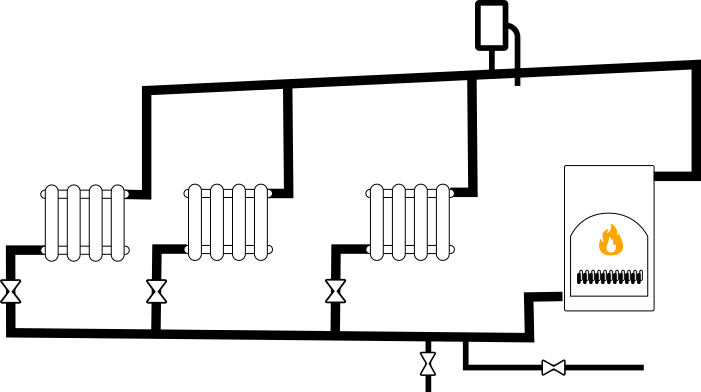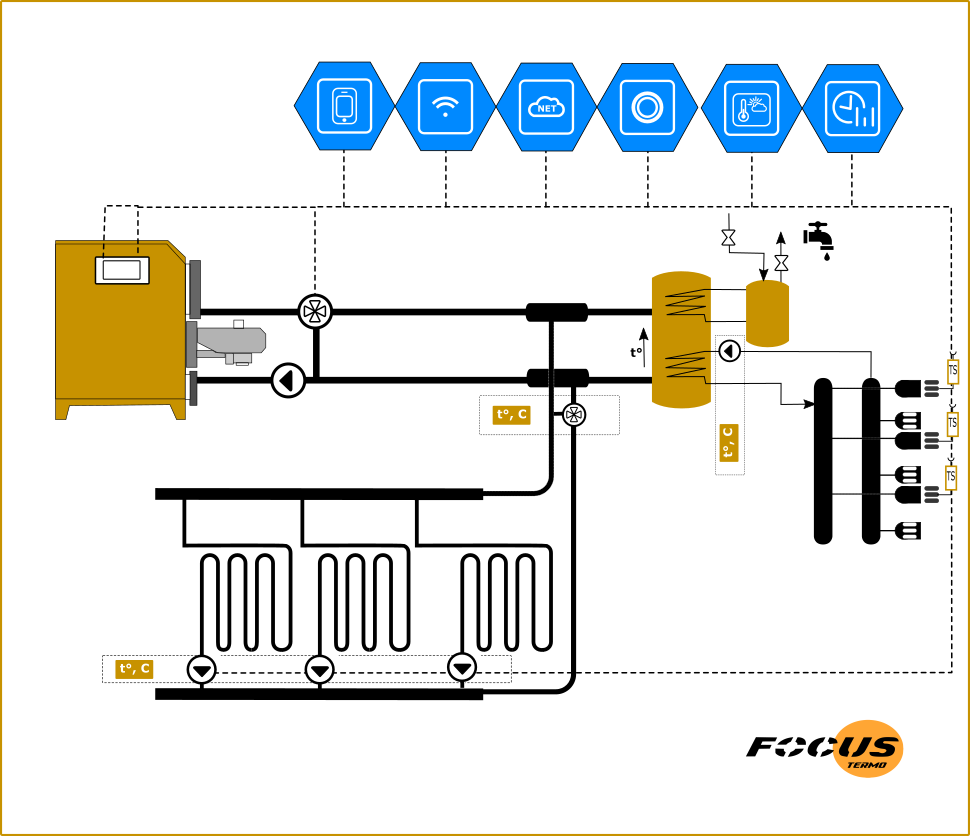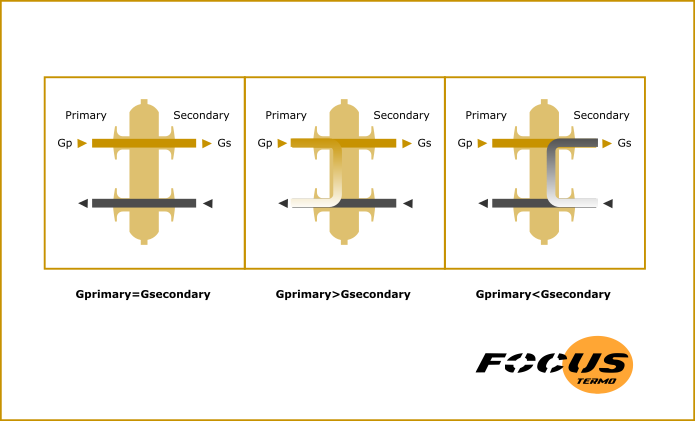How to choose pumps for heating - more expensive or cheaper
Typically, heating pumps create the necessary pressure in the heating circuit, which allows you to adjust the supply temperature. This applies to all systems with forced circulation, where the coolant moves not only under the influence of thermodynamic forces and gravity, but also under the pressure of the mechanical force of the pump, which creates the necessary movement in the heating system. We decided to make an overview of the types and brands of existing offers on the market, as well as tell in detail about the complete set of FOCUS pellet boilers that our company produces.
Forced circulation heating systems
Modern heating systems are designed for forced circulation of the coolant, even if switching to gravity mode is implied. This is necessary in case of a power outage, but most people who can order the installation of a heating system have the opportunity to purchase backup power supplies. We are talking about a special kit for a solar panel pump or a minimum power wind generator.
If this is not the case, the heating pumps may be put into inactive mode and the heating system will operate under natural pressure. But this possibility, of course, must obviously be assumed by the project. Maintaining gravity circulation is a good addition as organizing your home's critical heating infrastructure in case of unforeseen circumstances when alternative sources of heating pump power fail.

Gravitational circulation implies the connection of radiators in one circuit and the movement of the coolant under the influence of thermodynamic forces when the water is heated in the boiler and gravity. For these purposes, at a certain height (usually one floor above), to create pressure in the system, a tank with a coolant is installed, which is also a compensation tank.
When the water is heated, the liquid in such a heating system begins to naturally circulate, due to which it enters and heats the radiators. This is called natural circulation. Moreover, in some cases, installing a water tank may be unnecessary, since the boiler, when heated, sets the desired level of movement of the coolant.
When Collector Wiring is Required
Pumps for heating are installed in systems with a single circuit or with collector wiring. What does it mean? Installation of a heating system may involve connecting several heating circuits. This is clearly seen in the example of a high- and low-temperature circuit for radiators and a “warm floor”, respectively.

For the “warm floor”, a collector is mounted with wiring for several heating circuits for different rooms, where the speed of the coolant is controlled using sensors. Such systems anticipated analogues for heating circuits with radiators, which were previously regulated only with the help of local temperature controllers, the use of which also implied installation features. That each individual adjustable radiator should be installed on a parallel branch to the main circuit, as it can be closed or maintain a low pressure of the coolant, and this can create excessive pressure in the system and eventually lead to pipe breaks.
Again, such thermostats are applicable only to new types of radiators and are not installed on cast iron batteries. How to regulate the temperature in them in this case?
Usually the temperature was not regulated at all, but with a forced circulation pump this problem can be corrected and the heating can be made more uniform without peak heating at the moment of burning the stove. Excellent temperature stabilization and battery temperature control in such systems is achieved by installing a buffer tank. What is it for?
The buffer tank stores heat from unregulated sources such as stoves and solid fuel boilers. It is a tank with insulation to minimize heat loss. During and after accumulation, heating pumps installed in the system regulate the speed of the coolant and, accordingly, the temperature of radiators, including long-term heated and cooled cast iron ones.
But even when installing a pump for heating, it is not always possible to get rid of uneven heating. Usually the first battery will be the hottest, its temperature will correspond to 80 °C. The second battery will have a temperature of about 70 ° C, the third, respectively, 60 ° C. If the temperature is lower, the radiators are perceived by the residents as completely or almost cold. This can be regulated with a pump, but the general principle is the same: the battery near the heat source will be much warmer, and the coldest one will be the last one in the circuit.

To avoid this, collector wiring is performed with a small number of radiators, when the coolant from the boiler or buffer tank enters the hydraulic arrow, whose task is to mix the forward and reverse fluid flows. After the hydraulic separator, the coolant is distributed along the circuits evenly or depending on the needs. The movement of the coolant is regulated using a heating pump in the main and additional circuits. Each can have a sensor connected to a pump, or just a pump. The speed control of some devices may be manual. It depends on the chosen model.
Eventually…
As a result, powerful pumps for heating when distributing in a house or apartment are required for installation with a single circuit, when constant pumping of the coolant is required. If thermostats are not installed in the system, then parallel branches for radiators are not required, and temperatures are regulated using a manual pump or a climate control sensor. Often, buying a powerful pump from a premium line will cost less than purchasing fittings for manifold wiring. But it is the collectors that allow you to adjust the climate control in each individual room.
What is the difference between heating systems with pellet boilers FOCUS from conventional ones
The described principle of regulation is designed for the operation of unregulated heat sources. Each FOCUS boiler with an installed pellet burner is equipped with an EcoMAX microcontroller. This is a special device designed to control heating boilers. The controller regulates the on and off of the pellet burner and its combustion, since the combustion of solid fuel boilers is regulated over a very wide temperature range and is inaccurate. The operation of the burner depends on the schedule, the temperature on the sensors in the premises and on the street. Provide feedback to heating equipment premium heating pumps.
In other words, the heating system with a FOCUS pellet boiler does not require a buffer tank for heat accumulation and is controlled flexibly and automatically by a microcontroller that supports the connection of up to 10 sensors and aggregates their data. The controller manages several pumps in the system, providing the required temperature range.
This functionality requires modern pumps and a digital control function. It is about the designs, types and manufacturers of such equipment that will be discussed in the continuation of our review.






